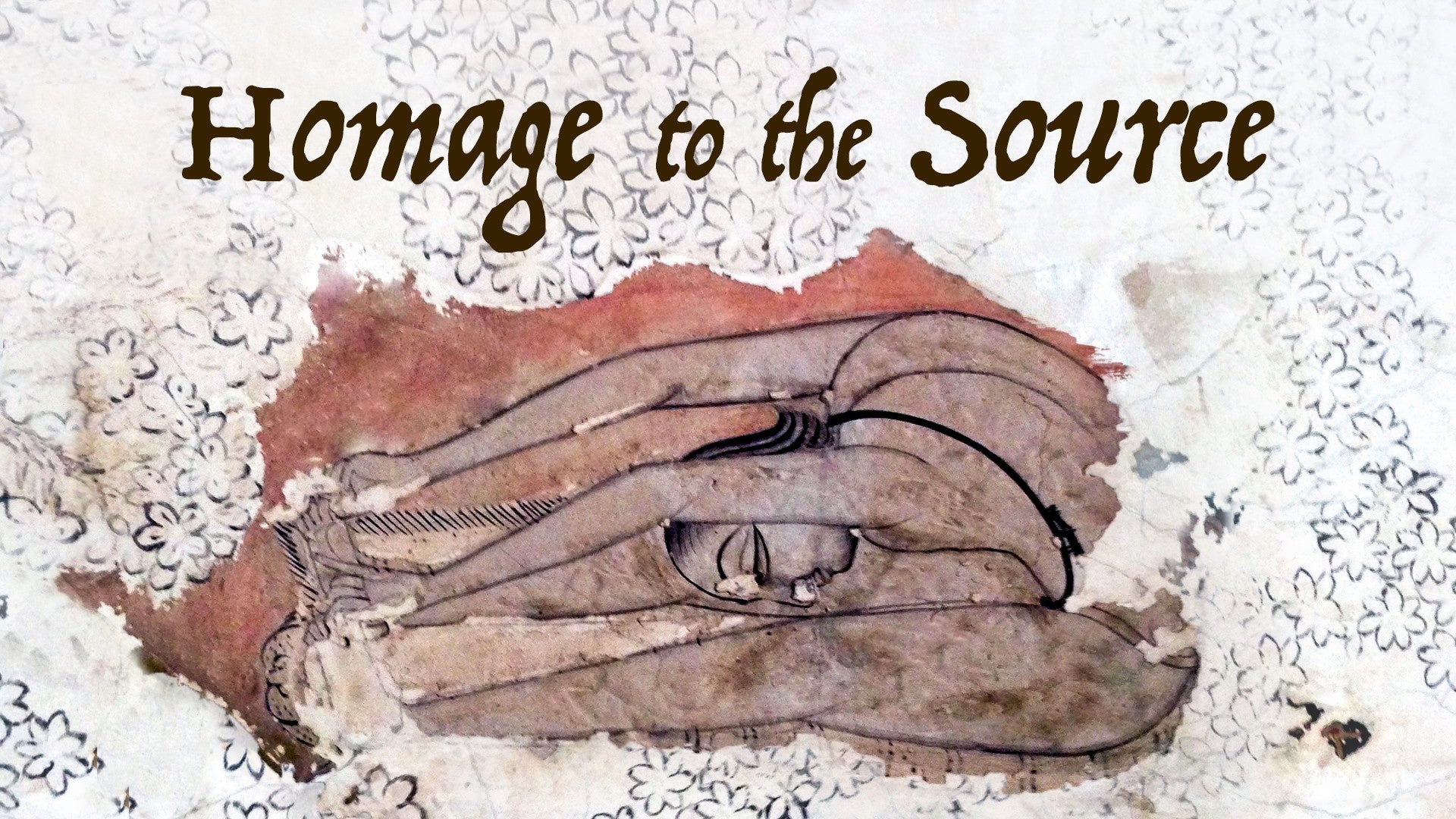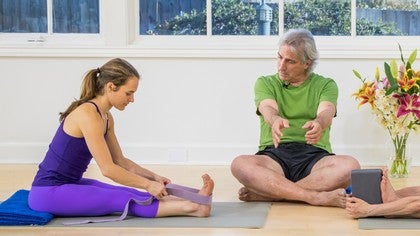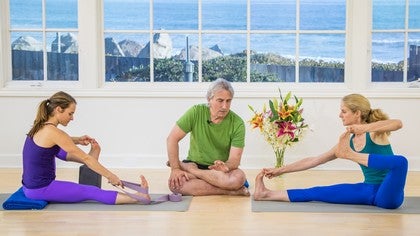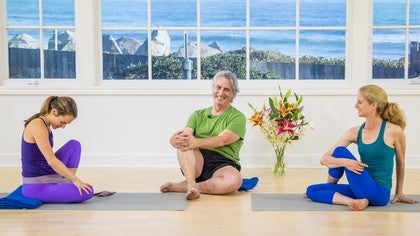Description
Richard, with the help of Alana and Betsy, breaks down the posture and explains the traditional meaning of the posture, as well as how the posture has become repurposed for a modern audience.
About This Video
Transcript
Read Full Transcript
Hi, we're here with Betsy and Ilana, and this pose is called Paschimottanasana, it's a difficult pose name to pronounce sometimes, it's Paschimottanasana, remember that in the Sanskrit language when you see the letter C, it's not pronounced as it is in English, it's pronounced like the C-H in church, so for example, you often hear people pronounce the word C-A-K-R-A as chakra, which hurts my ears quite a bit, it's actually chakra, and same thing with words like chitta which you'll find quite prominent in the yoga sutra. So Paschimottanasana, it's a reference, well we'll talk about this in a little bit, this is a pose that I call, that I say has been repurposed for a modern audience, so if you too would both stretch your legs forward into Dandasana, we can get started, and I would like Ilana to use the belt as she did for the Janu Shishasana pose please, and if you could take the sides of your feet and lift up. Now for less flexible people, a forward bend may not be much of a forward bend, you may actually be fairly upright for some of the stiffer people, but you give yourself a little bit more strap, this may be a forward bend for some students or even for you, so be aware that if you start to come forward from your belly, you're really not helping yourself very much, you need to come forward from the groins, what you want to be able to feel is a deepening of the groins, and the breath moving into the lower part of the belly, figuratively speaking of course, if your groins harden, the breath gets stuck in the upper chest. So we'll have Betsy come into the forward bend, and we'll have her use the block as we did on the previous exercise, and she wants to, this is the same pose as Uttanasana, the standing forward bend, a little bit more challenging because you're not able to cheat, you're not able to push your buttocks back to get into a deeper fold, you want to be sure that you have a very strong internal rotation of the thigh bones, so you're pressing the inner thighs down and you feel a widening across the sacred bone, and for Alana, when she's ready to come forward, again I wanted to make sure that the strap is slack, elbows stay straight, so you walk your hands very lightly along the step, elbows straight, like that, and that you can come down to an easy sitting forward bend. Now in the modern version of this pose, Paschimottanasana, what we're told is that Paschima, which means the west or the back of anything, is meant to stretch the back of the body, which it does, you can see that in this fold, the backs of the legs and the torso is being stretched.
However, in the traditional pose, Paschima did not refer to the back of the body, it referred to what's called the Paschima Marga, which means the western path, which is a synonym for the Sushumna Nadi, the central Nadi. In other words, what they did in this pose is that when the belly was pressed against the thighs, it forced the prana in the pelvis up into the opening to the Sushumna Nadi, to the central channel. So in the traditional pose, this was actually used as a breathing exercise, and again Paschima here referred to the western path, or the path in the back of the torso, called Sushumna Nadi, and of course nowadays we don't really think about that anymore, and we use this pose just as a stretch for the backs of the legs and the torso. Very nice, well done. So would you all both come up on an inhalation, inhale come up, very nice.
And that is Paschimottanasana, and as far as the modern version is concerned, we can call that the intense stretch of the Paschima, or the western side of the body, the back of the body. The front of the body is called Purva, and you know that you have a stretch called Purvottanasana, which means a stretch of the east side of the body, the front of the body. Very good, thank you Paschimottanasana.






You need to be a subscriber to post a comment.
Please Log In or Create an Account to start your free trial.